How To Stop Milk Production If Not Breastfeeding
37 hours of research 5 minute read

Understanding lactation and milk production
Breastfeeding is a natural practice that benefits both the mother and the infant in a number of ways. In some cases, a mother may decide not to breastfeed her child for personal or medical reasons.
It's crucial to comprehend breastfeeding and milk production before you begin the process. Breast milk production is based on supply and demand, thus reducing milk production may need persistence. In this article, we'll go over everything you need to know about lactation and milk production as well as offer you some practical advice on how to stop producing milk effectively and safely.
Reasons for discontinuing milk production
There are several reasons a mother can decide to stop producing milk. Among the most popular explanations are:
- Personal preference - Some mothers may decide to stop or stop nursing for a variety of personal reasons. This could be because of pain or discomfort when breastfeeding, a problem with the milk supply, or other personal reasons.
- Medical causes - A woman may need to stop producing milk for medical reasons. This could involve using specific medications that are dangerous for breastfeeding or having a health condition that makes nursing hazardous or difficult.
- Returning to work - Breastfeeding may not be realistic or possible for mothers who are returning to work. This can be because employers don't offer enough help or it's challenging to pump and store breast milk while working. 4. Baby's needs – A baby may occasionally be unable to latch on to the breast because of health conditions. In certain situations, a woman might have to stop producing milk so she can feed her child in other ways.
- Baby's needs - A baby may occasionally be unable to latch on to the breast because of health conditions. In certain situations, a woman might have to stop producing milk so she can feed her child in other ways.
Methods to stop milk production more easily

In order to discontinue milk production, it is important to make sure that, you're not expressing any more milk than is necessary, and your breasts are supported properly. These are crucial procedures that will help you feel more comfortable while progressively reducing your breast milk production. Dealing with the pain that your breasts probably experience while having your milk suppressed is one of the hardest elements of the process. As a result, these suggestions are intended to assist you in drying up your breast milk while also helping to reduce the production of milk.
1. Weaning off milk production manually
Gradual weaning is a gentle approach that allows the body to adjust to the decreasing demand for milk. It is typically advised to gradually wean milk production because it is safer for both the mother and the child. Health problems including engorgement, mastitis, or clogged ducts might result from abrupt weaning. Here are some actions you can take if you want to wean your kid gradually:
- Reduce the daily amount of nursing sessions, to begin with. If your child is older than six months, you can substitute formula or solid foods for some of the feedings.
- Reduce the duration of each session's nursing gradually. If your baby starts to cry, you can divert them with toys or other activities.
- Start skipping some breastfeeding sessions entirely. To accomplish this, pick feedings that are less significant to your infant or stop giving them one at a time.
- You will be able to wean your child from the final nursing session eventually.
It's crucial to remember that, depending on your baby's age and feeding habits, the process of progressive weaning might take several weeks or even months. To guarantee a secure and easy transition for you and your baby, you can ask a medical expert for advice. Additionally, you might feel uncomfortable or engorged while weaning. You can get advice from a healthcare practitioner on how to deal with this discomfort, such as applying cold compresses or taking over-the-counter pain relievers.
2. The natural ways to stop milk supply
Breastfeeding is an important part of parenting and it provides a lot of health benefits to the baby and the mother. However, when it is time to stop breastfeeding, many mothers find that their milk supply does not decrease on its own. Fortunately, there are natural remedies available that can help mothers reduce their milk supply without having to resort to medications.
- Wear a supportive bra: A supportive bra will help to lessen the likelihood of engorgement and ease discomfort.
- Utilize cold compresses to reduce swelling and discomfort in the breast.
- Skip the hot showers: A lovely hot shower is one of the few things in the world that is both tranquil and comforting. Who wouldn't desire something that was warm, calming, and refreshing? If you're one of the many women who find that hot water in the shower causes milk to erupt, you should probably avoid using hot water for a bit. You can even turn away from the showerhead or even cover your breasts with a towel if you find it impractical to completely avoid the heat.
- Use cabbage leaf therapy: Cabbage leaves have been shown to help with milk suppression and to lessen engorgement. Put cooled cabbage leaves in your bra for periods of 20 to 30 minutes.
- Massage: To aid in milk suppression and ease discomfort, gently massage your breasts. Avoid massaging too vigorously, though, since this could result in more milk being produced.
- Avoid pumping or expressing milk unless absolutely required. This could result in more milk being produced and a delay in the weaning process.
- Keep an eye on your diet: Your body can generate more breast milk when you eat certain foods, which are referred to as lactogenic foods. Avoid consuming lactogenic foods like oats, flax, and brewer's yeast if you're attempting to reduce your breast milk production.
-
Drink teas and herbs: Some herbal teas may cause breast milk to become drier. Whether or not they contain the proper herbs to dry up breast milk, however, determines how well they work. The consumption of herbal teas, such as a warm cup of sage tea, will help you reduce your lactation while still being delicious. Chasteberry, jasmine, parsley, and peppermint oil are further herbs that may aid in drying up your milk.
Also, keep in mind that herbs can have risks and adverse effects just like medicines do. Before using any herbal supplement or therapy, it's crucial to consult your healthcare professional. A person can consume edible herbs or try particular herbs in teas or as dietary supplements.
3. Medications that help dry up breastmilk
Despite not being used specifically to suppress lactation, some drugs have been shown to decrease the amount of breast milk produced. Discuss these options with your doctor.
- Medications for pain relief - It may be time to consult a medical expert about what medication you can use to safely and efficiently relieve pain if cold packs, cold compresses, or cabbage leaves aren't working for you and your breasts continue to hurt. If you suffer any pain or pressure, take an over-the-counter pain medicine like Tylenol (acetaminophen) or Motrin (ibuprofen).
- Anti-prolactin medications drugs like cabergoline and bromocriptine lower prolactin, which helps to dry up the supply of breast milk.
- Tablets for birth control and estrogen - Estrogen can aid in lowering the production of breast milk. A combination hormonal birth control pill may contain estrogen if the user is not trying to conceive.
- Decongestants like pseudoephedrine can stop the production of breast milk. People who use this option should stop nursing and not utilize this strategy to merely lower supply because decongestant drugs do seep into breast milk.
- Sudafed - Although one study found it to be quite successful when used off-label to dry up breast milk, Sudafed, commonly known as pseudoephedrine, is a cold remedy. Despite the fact that this medicine is frequently sold over the counter, you should always see your doctor before taking any medication while nursing.
- Vitamin B could become your new best friend if you're just starting the lactation suppression process and haven't started producing breast milk yet. According to certain studies, consuming vitamin B before increasing milk production may help to reduce lactation. Despite the fact that vitamin B is typically safe to use, you should always see a lactation consultant or healthcare professional before using it to reduce your milk supply.
Most Popular Formulas Like Breastmilk
If you’ve made the decision not to breastfeed, whether it’s due to personal choice, medical reasons, or any other factor, it’s essential to find the right formula for your baby’s needs. While there are countless options on the market, we’ve handpicked three top-quality products that may suit your requirements. Formulated to closely resemble breast milk in nutrient composition, HiPP Dutch, Holle Goat Dutch, and Kendamil Organic offer exceptional alternatives for nourishing your little one. Let’s explore what makes each of these formulas stand out:
✓ 100% Organic Formula
✓ With Added Prebiotics and Probiotics to Mimic Breast Milk
✓ HiPP's most popular formula
Check PricePopular With Parents Because: HiPP Dutch significantly exceeds all European Union requirements for organic certification. To help kick start a healthy gut microbiome, HiPP Dutch imitates natural breast milk by having added prebiotics and probiotics, alongside immuno-boosting galacto-oligosaccharides originating from organic lactic acid bacteria cultures. This formula is GMO-free, gluten-free, soy-free, starch-free, corn syrup-free, and sugar-free - all the while nutritionally rich.
✓ Demeter certified (Organic++)
✓ Easy-to-digest Goat Milk Formula Close to Breast Milk
✓ Popular for babies with sensitivity to cow's milk
Check PricePopular With Parents Because: Holle Goat Dutch is a trusted alternative for parents seeking a gentle formula for babies with cow's milk sensitivities. It is developed to closely resemble natural breast milk protein composition. Additionally, it is lactose-rich and easy to digest, as it is made from Organic Whole Goat's Milk.
✓ Contains Milk Fat Globule Membrane (MFGM) like in Breast Milk
✓ Vegetarian-friendly (Contains Plant-Based DHA and ARA)
✓ EU and British Soil Association Certified Organic
Check PricePopular With Parents Because: Kendamil Organic is beloved by parents for its commitment to wholesome, organic ingredients and sustainable practices. Its gentle formula, free from palm oil and GMOs, exclusively uses full cream cow's milk to create a lactose-based infant formula that is as close to natural human breast milk as a formula can be made.
The Timeline - How long before the breast milk dries up?
Depending on the technique utilized and the length of nursing, the time it takes for milk to dry up can vary. Generally speaking, it might just take a few days, but it could also take a few weeks or even months, depending on things like your method of lactation suppression of choice and your present milk production. It's crucial to remember that even when the majority of your milk has decreased, you may still be able to produce some milk for a few months after weaning. For many women, this leftover output is typical.
However, if you find that your breast milk returns without any apparent reason or if you experience any concerns or discomfort, I strongly recommend reaching out to your medical team. They will be able to provide you with personalized guidance and support to address any unexpected changes in milk production.
Please remember that every individual's breastfeeding journey is unique, and it's essential to prioritize your well-being throughout the process.
Possible side effects of a reduced milk supply

The common issues that many mothers face: are milk leakage and breast discomfort.
- Milk Leakage: It can be frustrating to put on your favorite top and suddenly notice wet spots on your breasts. However, there are a few effective tricks that can help you deal with this inconvenience and ensure your comfort throughout the day.
- Consider using roomier bras and breast pads to absorb any leaks.When selecting breast pads, it's best to avoid those that hold moisture against your skin, as they can contribute to further discomfort. Opt for pads that offer good absorption while keeping your skin dry.
- Sleep in comfort. If you prefer wearing a bra while sleeping, ensure that it doesn't dig into your breasts, as this can lead to blocked ducts.
- Blocked ducts can cause lumps and soreness in the breast, and if left unattended, they may progress to a breast infection called mastitis.
- Mastitis: If you experience symptoms such as breast tissue heat, redness, inflammation, or flu-like symptoms like chills or body aches, it could indicate that you have developed mastitis. In such cases, it is crucial to consult your doctor or healthcare provider promptly. Delaying medical attention or failing to unblock the milk ducts can increase the risk of developing breast abscesses, so please seek medical assistance as soon as possible.
- Engorgement is another discomfort that many mothers face during the weaning process. It takes time for your body to adjust to the reduced breastfeeding frequency, resulting in overfilled and engorged breasts. To alleviate the pain associated with engorgement, some women find it helpful to pump all the milk from their breasts once to relieve the pressure. Doing so can prevent the pressure from building up excessively again. It's worth noting that the more frequently you express milk, the more your body will continue producing it, so find a balance that works best for you.
Remember, you are not alone in facing these challenges, and there are strategies available to help you manage them effectively. If you have any further concerns or questions, please don't hesitate to reach out to your healthcare provider, who can provide personalized advice based on your specific situation.
Coping techniques for post-breastfeeding depression

Breastfeeding is one of the most intimate and emotional experiences for both the mother and the baby. When it comes time to wean, it can be a difficult time for many mothers as they navigate the hormonal shifts and emotions associated with this transition. Post-breastfeeding depression is a real issue and one that should not be taken lightly. However, there are ways to cope with the emotional rollercoaster of weaning.
Post-breastfeeding depression is a type of depression that occurs after breastfeeding ends. It is a hormonal shift that can trigger emotional changes in a mother. Symptoms can include mood swings, anxiety, and feelings of sadness or loss. It’s important to understand that post-breastfeeding depression is a real issue and should be addressed.
- Surround yourself with a strong support network - One of the best ways to overcome post-breastfeeding depression is to surround yourself with a strong support network. Getting involved in a support group or speaking with other mothers who have experienced the same thing can be quite beneficial.
- Look after yourself - Additionally, you can take care of yourself by making time each day for meditation, exercise, or other stress-relieving activities. A professional counselor or healthcare provider might be contacted for assistance.
- Be kind to yourself - It’s important to remember that weaning can be a difficult and emotional time. It’s okay to feel overwhelmed or sad. Be kind to yourself and allow yourself time to process your emotions. Remind yourself that you are doing the best you can and try not to be too hard on yourself.
- Focus on the future - As you move forward, focus on the future and the new opportunities that await you. Think about the things you once enjoyed doing before having a baby and start incorporating those things back into your life. This can help you feel more fulfilled and help you transition into a new phase in your life.
Weaning can be an emotional rollercoaster, but it’s important to remember that you are not alone. Surround yourself with a support system, practice self-care, and be kind to yourself as you navigate this transition. Just keep in mind that support is available at all times.
How To Stop Breastfeeding
In the pursuit of understanding how to stop breast milk production, it's also essential to acknowledge the emotional aspects of this transition. Ceasing breastfeeding is not just a physical adjustment but can also bring about a range of emotions. It's normal to experience feelings of both relief and sadness during this period. Taking the time to reflect on and process these emotions is an integral part of the journey. Consider seeking support from friends, family, or support groups to navigate this emotional terrain effectively. Remember, caring for your emotional well-being is as important as tending to the physical aspects of stopping breast milk production.
It is crucial to realize that deciding to cease producing milk is a personal choice that can be impacted by a number of variables. Because every woman's body is different, there may be variations in how each woman stops producing milk.
To reduce milk production, try gradual weaning, expressing just enough milk to ease discomfort, avoiding stimulation, cabbage leaf therapy, over-the-counter drugs, and getting assistance. A healthcare expert should always be consulted for specific guidance and support along this journey.
Please keep in mind that the insight offered here is general in nature, and it is always advised to speak with a healthcare expert for specialized guidance and support. They can evaluate your particular circumstance and offer suitable solutions based on your unique requirements.
We hope these insights prove useful as you think about ceasing milk production while you aren't breastfeeding. Be kind to yourself and give your body the time it needs to adjust.
3 Most Popular Formulas For Breastfed Babies
Organic Life Start is committed to providing accurate, reliable, and trustworthy information to parents and caregivers. We carefully choose credible sources and follow a meticulous fact-checking process to uphold the highest standards in infant nutrition and parenting advice. To learn more about our dedication to accuracy, please explore our editorial guidelines.
Link To Sources


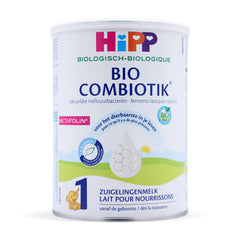
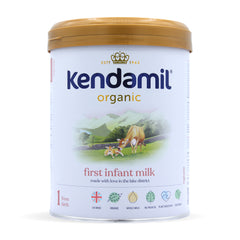
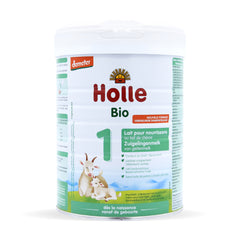
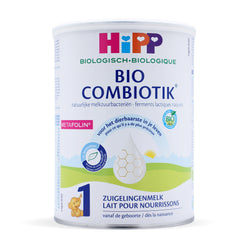
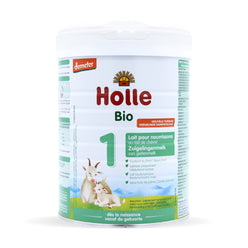
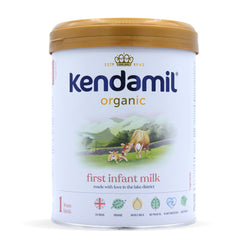






Bryan -
The decision for my wife to stop breastfeeding was incredibly difficult, filled with mixed emotions of love, guilt, and concern for our baby’s well-being. It required deep reflection and courage, as she ultimately chose what was best for both her health and our family.
Adalee -
November 17, 2025
Wondering about the safest ways to slow down or stop milk production when not breastfeeding. Could you share more details on which methods or strategies actually work?
Haisley -
October 23, 2025
I’ve heard so many mixed tips about stopping milk production naturally—like cabbage leaves or tight bras. What actually worked for you without causing too much discomfort?